Background and history of retail
Modern consumer behaviour was shaped by early retail.
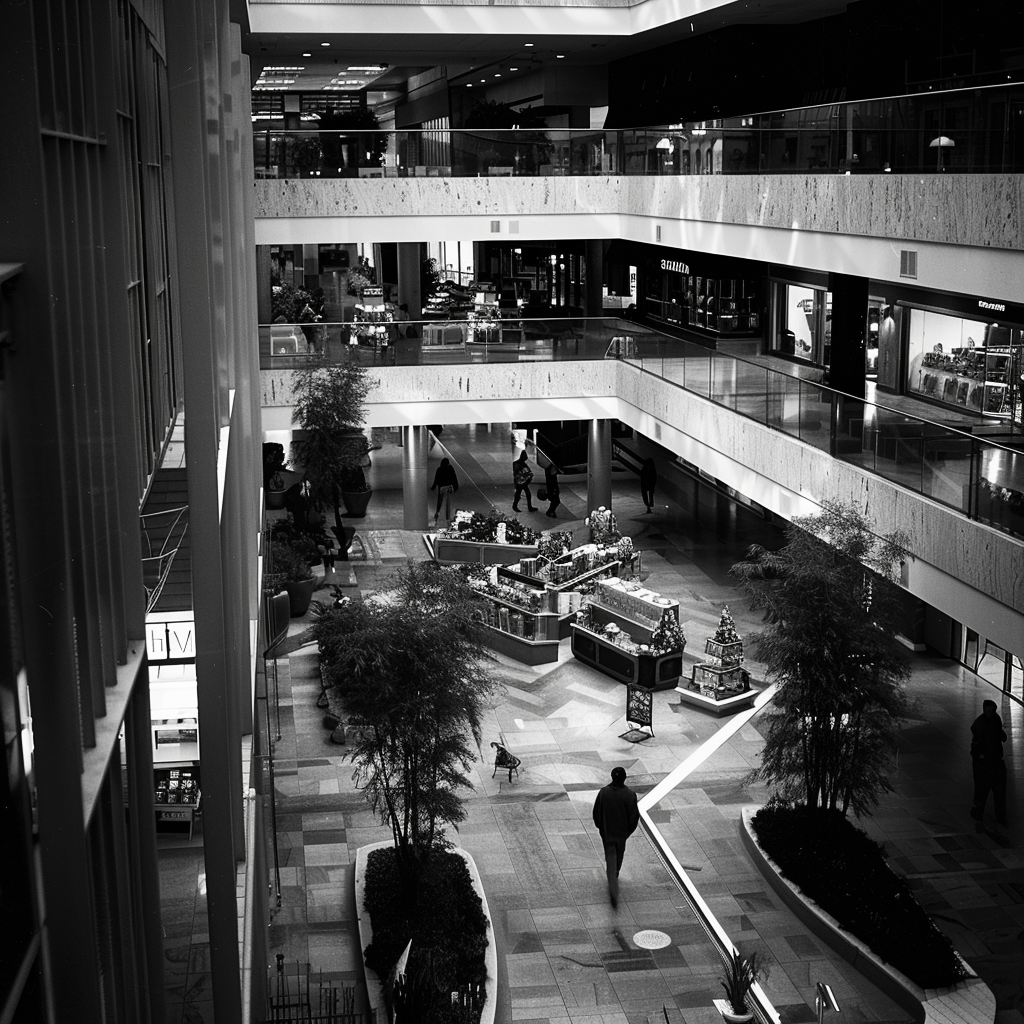
Southdale Center, Edina, Minnesota, USA The first shopping mall. It was designed as a livable and lovable space.Such spaces can be found all around the world today.
Retailing has been around for a long time, but this article is about the type we are familiar with today. Modern retailing owes its origins to the industrial revolution, during which concepts of efficiency and productivity were applied to sell merchandise to consumers. Early retailers such as Le Bon Marche, Selfridges, Wanamaker’s, Marshall Field’s, a.k.a Macy’s and Selfridges, Woolworths, LL Bean, Sears pioneered concepts such as merchandise aggregation, customer service, fixed price retailing, window displays, retail advertising, in-store layout, returns, store credit and financing, retail chains, customer loyalty programs, and collecting customer data. You will find all of these in what is considered modern retail. Over time, the role of the retail space evolved to offer more than just merchandise and with the enclosed malls, it became an experiential destination where you not just shopped for stuff, but experienced other familiar and pleasant things. .
Experience already incorporated into shopping
When the first enclosed malls such as Southdale Center in Edina, Minnesota opened in 1959 it was an instant hit as it offered a controlled and comfortable shopping experience. This format was rolled out across the US by players such as Simon Property Group and Westfield Corporation who launched malls as a social experience incorporating elements such as food courts, cinemas, and amusement areas. This growth continued from 60s to the 90s culminating in the Mall of America. The key value of these enclosed spaces was to offer consumers a comfortable and controlled environment where they could spend more time.
Zombies are a metaphor for mall consumerism
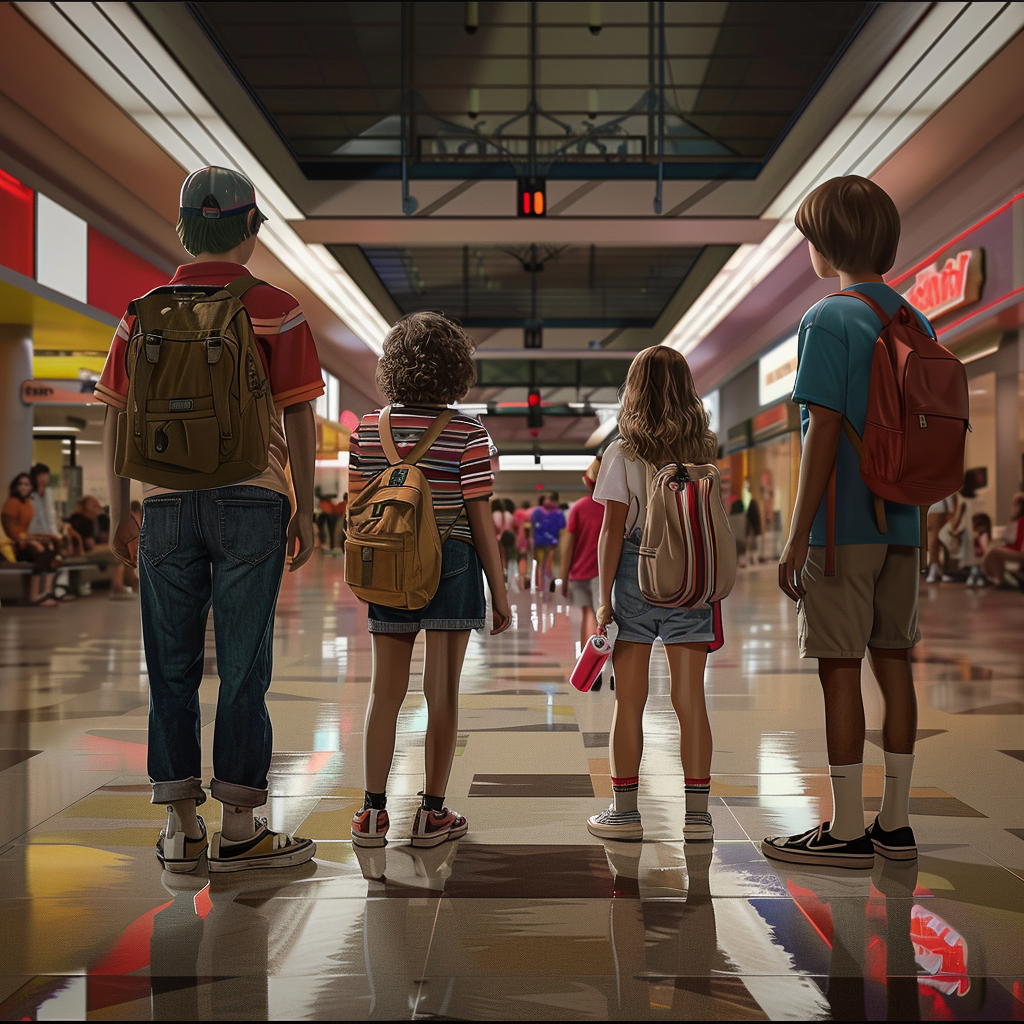
Starcourt Mall from Stranger Things is a nostalgic reference to the heydays of mall culture as well as American consumerism.
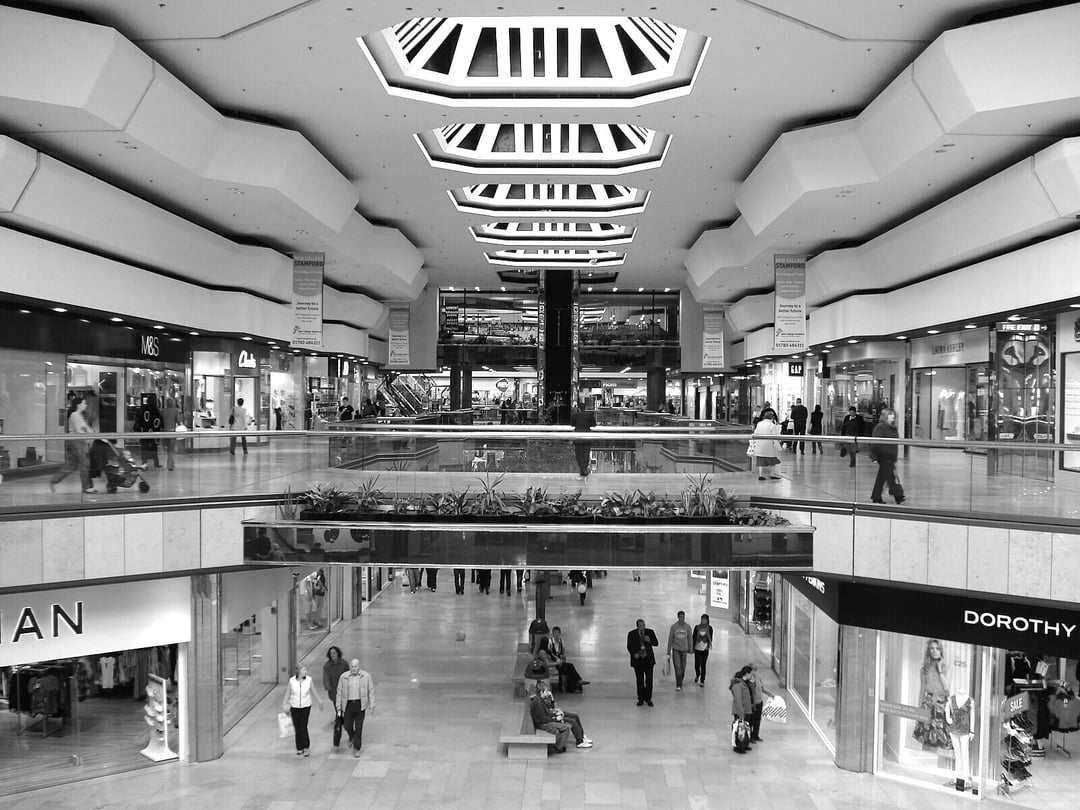
In the UK, shopping centres were pioneered by John Laing plc who built many shopping centres such as the Queensgate Shopping Centre in Peterborough.
The game changer: Online retail
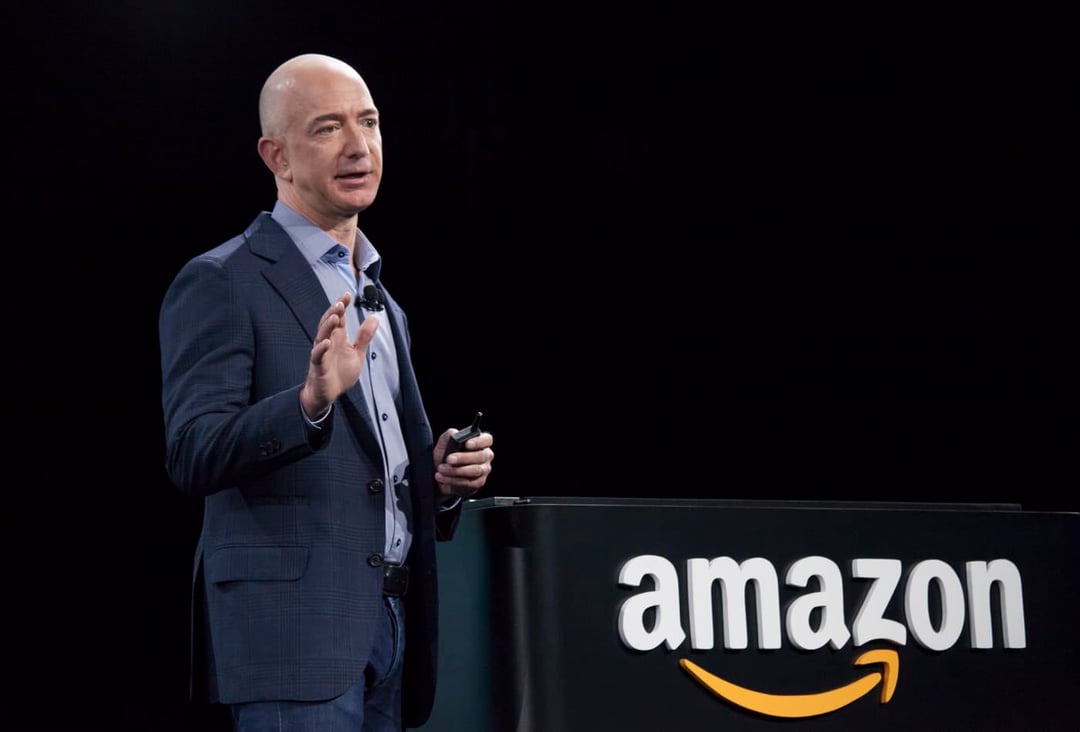
Jeff Bezos used the spread of the internet to accelerate delivery of convenience and choice, hitherto the domain of shopping malls and the high street.
Online retail has transformed our relationship with shopping. Beginning with Amazon’s launch of an online bookstore in early 90s to its rise into a $143.1bn retail giant today. The hardest hit were traditional enclosed and strip malls. In the UK, as of September 2023, online retail accounts for 26.7% of all retail (source: ONS) as major chains cut down on their bricks and mortar operations. In the US, as a percentage of total retail sales, current e-commerce sales are around 15.4% (source: United States Census Bureau).
COVID-19’s impact on retail
McKinsey data (Source: McKinsey) suggests consumers will continue with the lifestyle changes they adopted during the lockdown. However, this needs nuancing -- COVID has left both first and second order effects on our shopping habits. The first order effects include closures of stores and decline in footfall, increase in online shopping, supply chain disruptions, and finally bankruptcies and closures. Simon Property Group, Taubman Centers, Washington Prime Group, Unibail-Rodamco-Westfield have all turned their lights out.
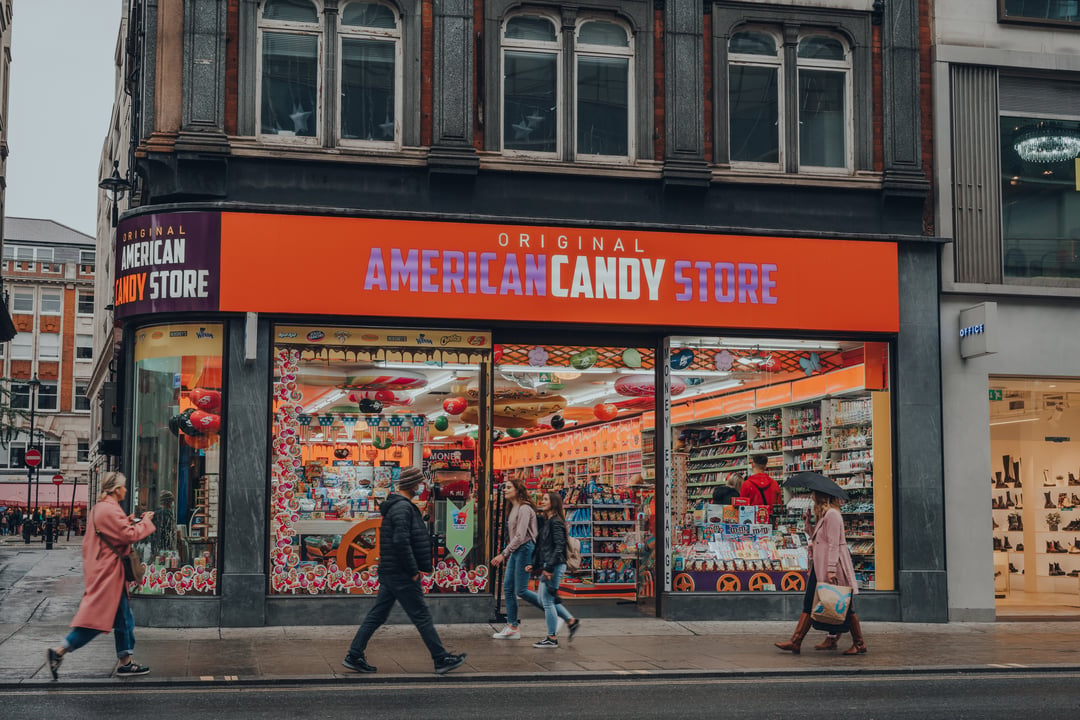
The various candy stores in Oxford St, London exemplifies the decay of this iconic high street. Gutted by online retail, sky-high business taxes and pandemic lockdowns, it is today suspected of being a haven for criminality perpetrated in plain sight.
On the other hand, the second order effects include accelerated e-commerce growth and new shopping habits such as omni-channel and touch free shopping, created new retail formats (e.g., ghost kitchens, dark stores), re-evaluation of supply chains, real estate impact (store and office closures), sharp split between big spenders and penny pinchers.
Retail must adapt to survive – enter experiential retail.
Different industries have faced threats by transformations in economy, technology, demographics, or culture. Cinema is a prime example of this. From the advent of television, VHS/DVD to streaming services, cinema – whether movie studios or exhibition chains – have adapted to the changes by transforming the content and exhibition formats that play on the human desire to moved.
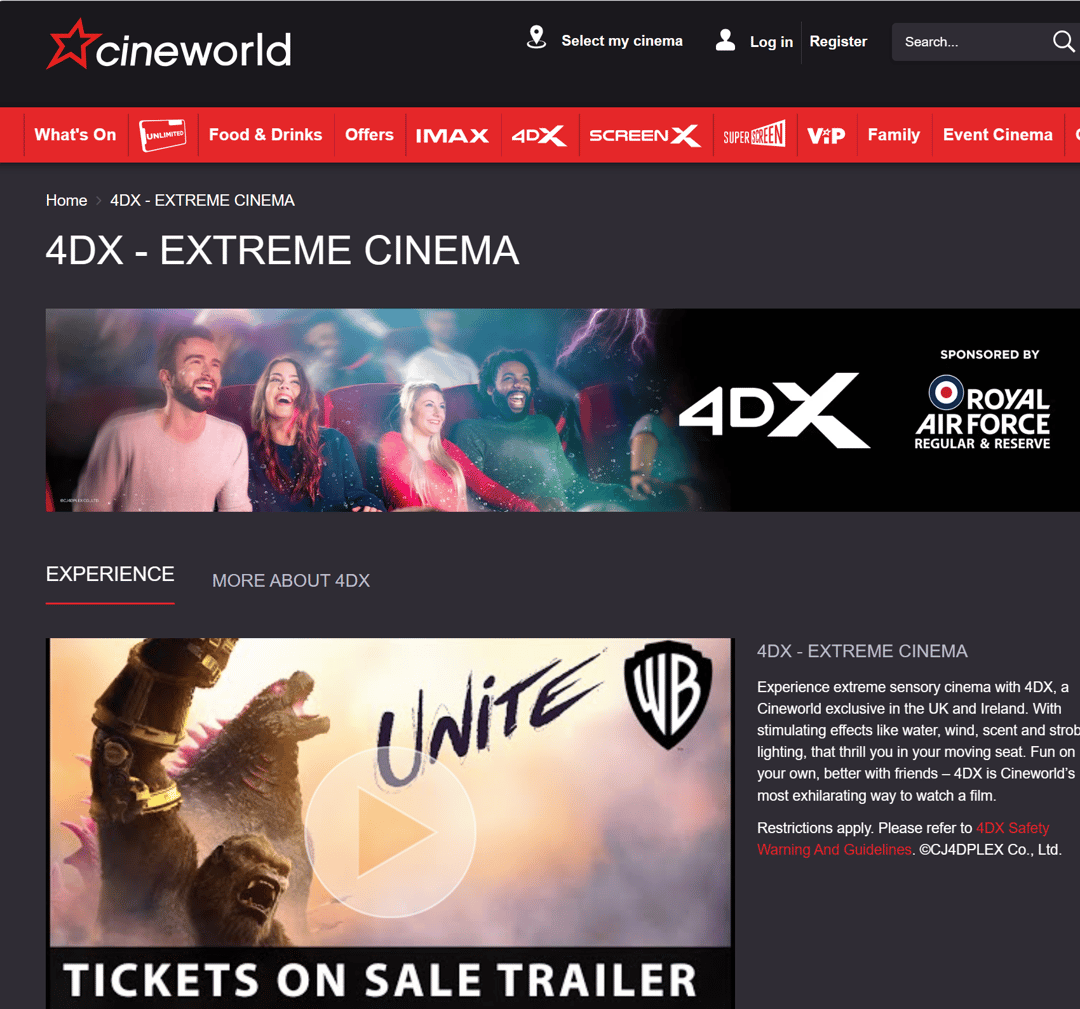
Cineworld in UK and Cinepolis worldwide have adopted various technologies (4DX cinema) and enhanced their service (e.g., seating) to take on streaming services.
Screenshot of Cineworld website taken on 11 April 2024.
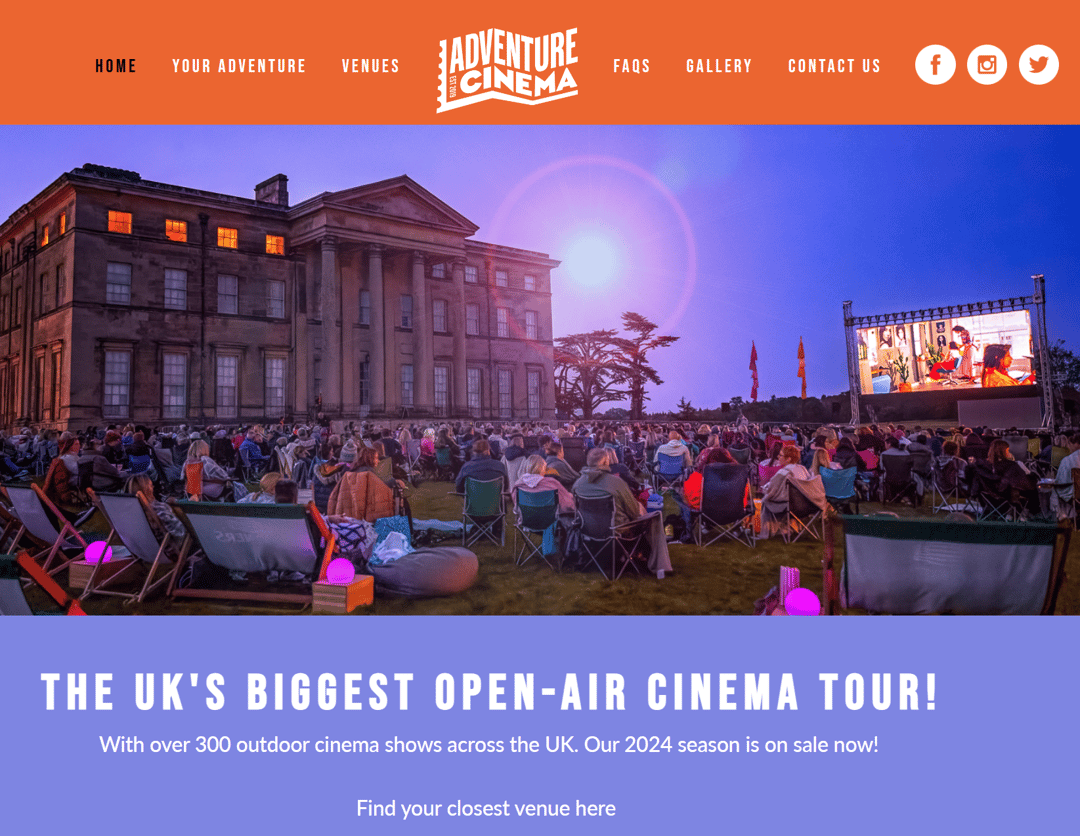
Adventure cinema taps into a recessive culture of outdoor viewing creating a sense of community that traditional exhibition does not permit.
Screenshot of Adventure Cinema website taken on 11 April 2024.
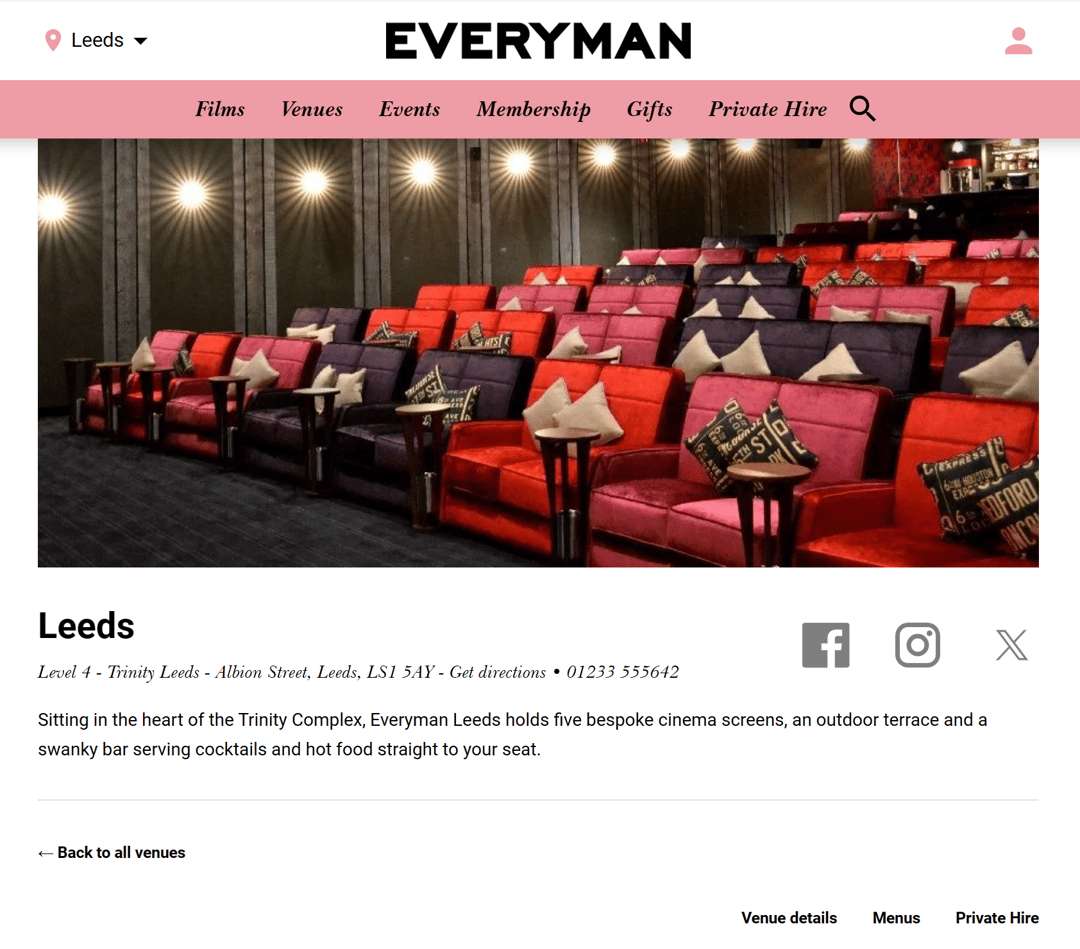
Everyman cinema taps into the codes of intimate, personal and indulgence.
Screenshot of Everyman Cinema website taken on 11 April 2024.
While retailers must adapt their business models to the ways of online or digital first retailers, let’s not forget that the former still have a lot of fight left in them. Most of us still shop in store, though this is rapidly changing as work from home, recession and cost of living crisis, supply chain disruptions, energy crisis hits the “everything under one roof” format of retailing.
Retail too needs to adapt and transform, and the opportunity lies in delivering experiences rather than just continuing with business as usual.
Experiential retail in semiotic terms – transformation of meaning
While traditional retail was primarily focused on aiding consumers in efficient browsing and purchasing, modern retail places a strong emphasis on delivering a memorable and immersive experience. Experiential retail when viewed through the semiotic lens can be defined as the transformation of meaning of a store, as well as unique brand meanings communicated via the in-store experience. This is a move from the transactional to the affective.
Modern experiential retail is part of a broader paradigm shift of what is called the Experience Economy, which has been understood to belong to categories such as tourism, festivals, and hospitality. Experiential retail consists of making changes to the physical environment as well as using it to offer education, escapism, and entertainment. The immediate goal of experiential retail is not just selling stuff, but to have an impact that transforms the shopper’s relationship with the brand.
How to deliver Environment, Education, Escapism and Entertainment?
The purpose of experiential retail is to create a new, memorable consumer experience while refreshing and reimagining the brand. This helps the brand connect with the consumer at a deeper level. Semiotics helps in this area by researching the cultural codes relevant to the category and the brand and identifying the signs and symbols (design elements) as well as narratives and myths that can be part of the experience. A semiotic examination of case studies from the four experiences of Environment, Education, Escapism, and Entertainment reveals the codes along with their signs and symbols. These include:
- Environment: The voting booth and the church
- Education: The self-actualising individual and authority
- Escapism: The serene art gallery vs exhilaration
- Entertainment: surprise and intrigue
Environment / The Place – The Voting Booth and the Church.
Retailers have been transforming the physical atmosphere and improving on transaction convenience through the incorporation of technologies, devices, and development of new service models such as omni-channel retailing.
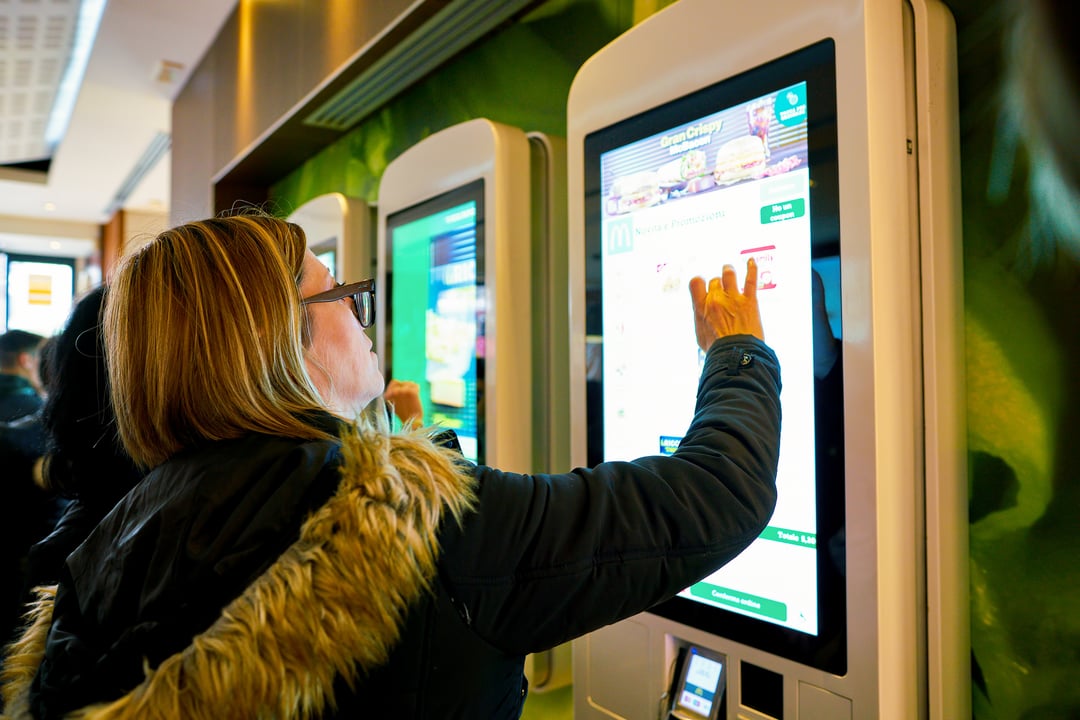
McDonald has transformed its retail environment through the incorporation of touch screens making purchase seamless
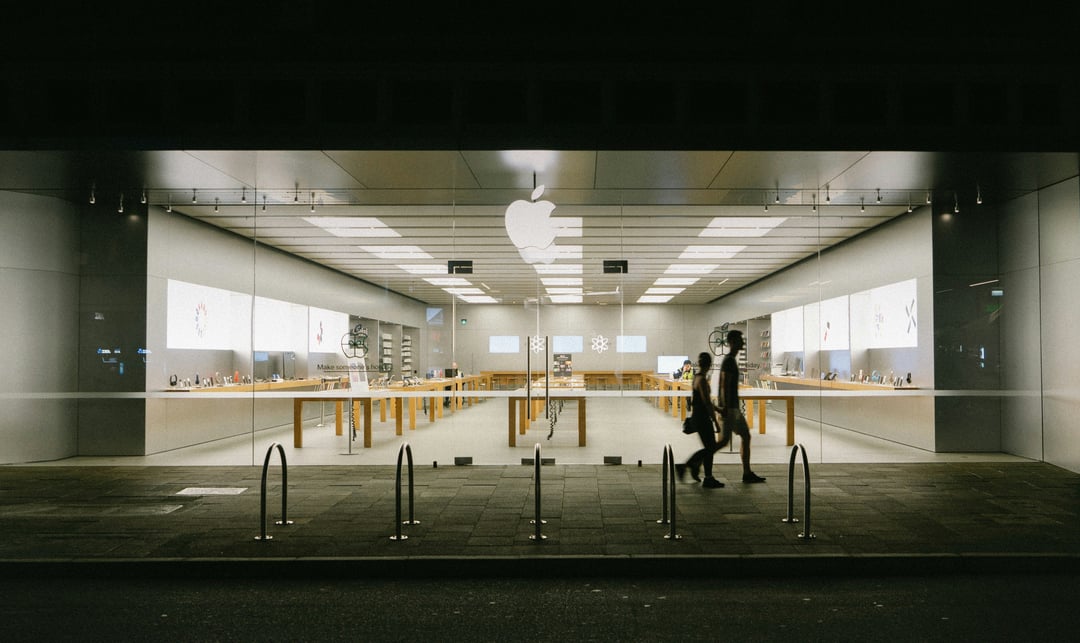
Apple Stores with their minimalist layout and bright interiors challenged the conventions of retail environments.
Photo by Harry Cunningham
Semiotic takeaway: McDonald’s usage of touch screens taps into codes of democracy/egalitarianism, individualism and ironically care. You can order food yourself and have a direct link to the food preparation process, every member in the group gets to “vote” on what they want, you no longer must wait in line to be served by overworked counter staff.
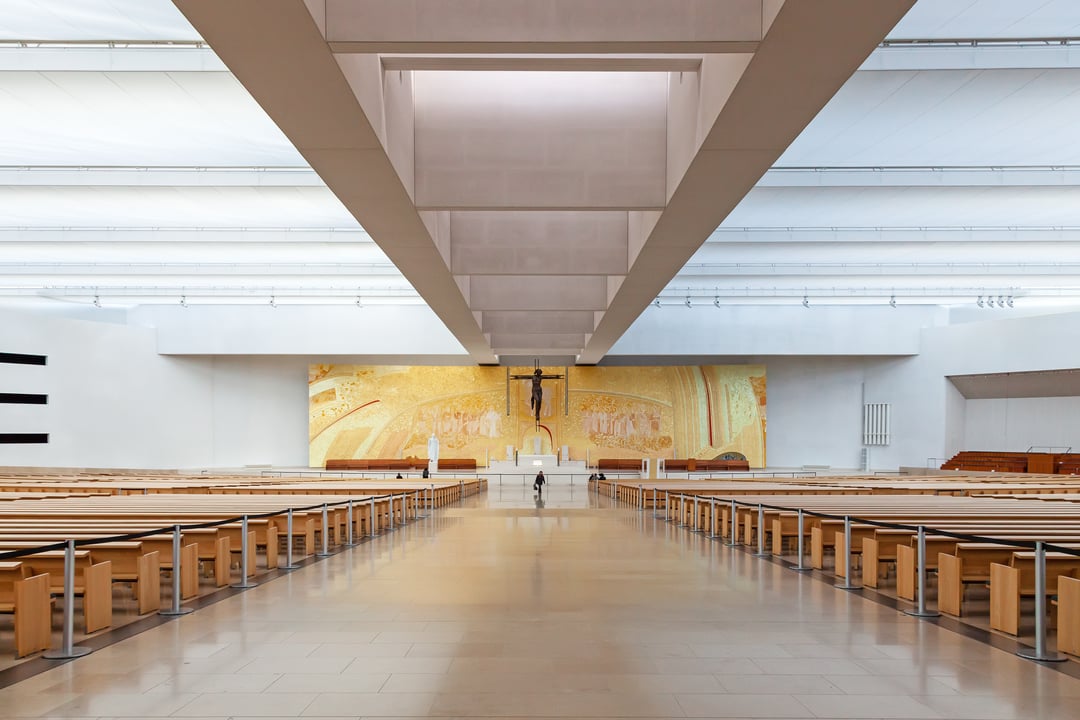
Some church denominations make use of modern minimalism consisting of neutral colours such as white or grey, bright and airy interiors, and natural wood finishes.
Pictured: Sanctuary of Fatima, Portugal.
Apple stores borrow heavily from modernist churches – the colour white, bright lights are associated with heaven and spirituality. Apple Genius’ act as “angels” helping us guide through their products and services and ensuring we go away with more than just stuff. Stores have effectively become places of worship for fans of the brand.
Education – the self-actualising individual and authority
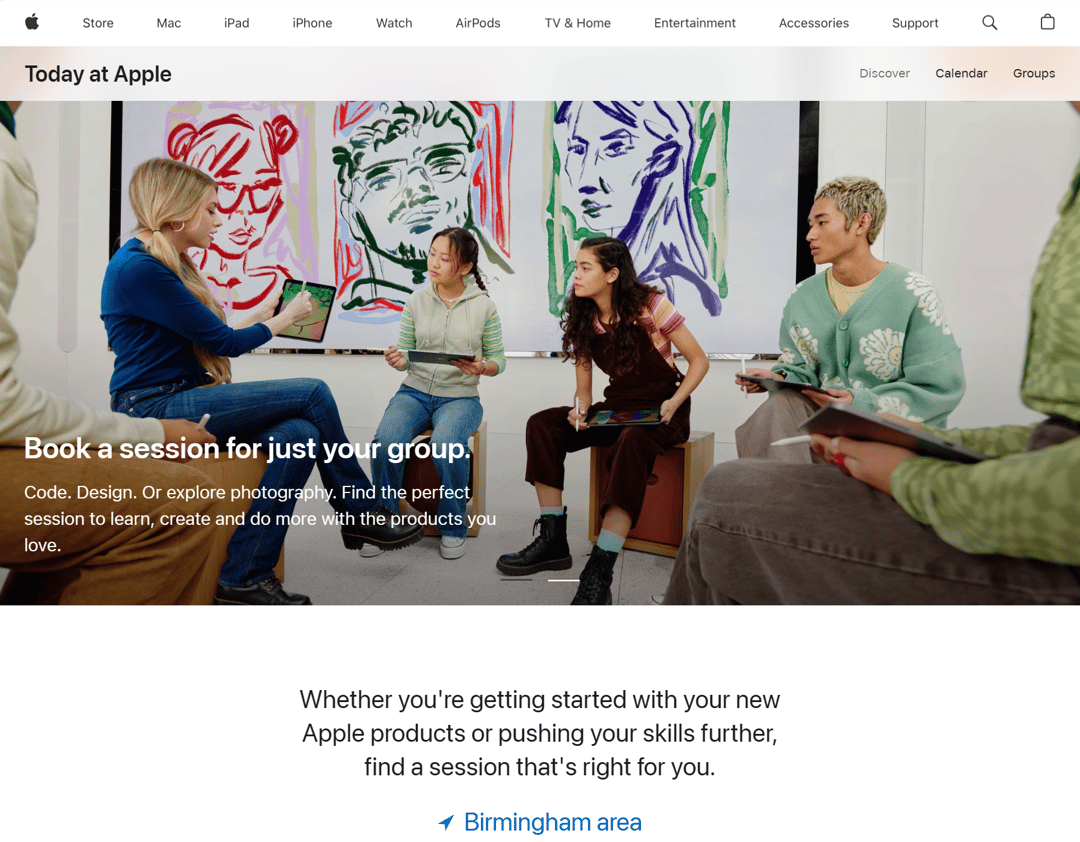
Apple routinely holds events to help consumers better understand and use their products and services.
Screenshot of Apple website taken on 11 April 2024.
Brands such as Apple and Williams-Sonoma tap into the consumer’s desire to enhance their knowledge and skills through demos and product advice. This brings them into the store where they get to “unlock” the product or service’s “secrets”. The codes of learning are deep rooted in culture, which brands are tapping into.

Williams-Sonoma Cooking Classes semiotically tap into the show and tell of chemistry lessons.
Photo by Edgar Raw
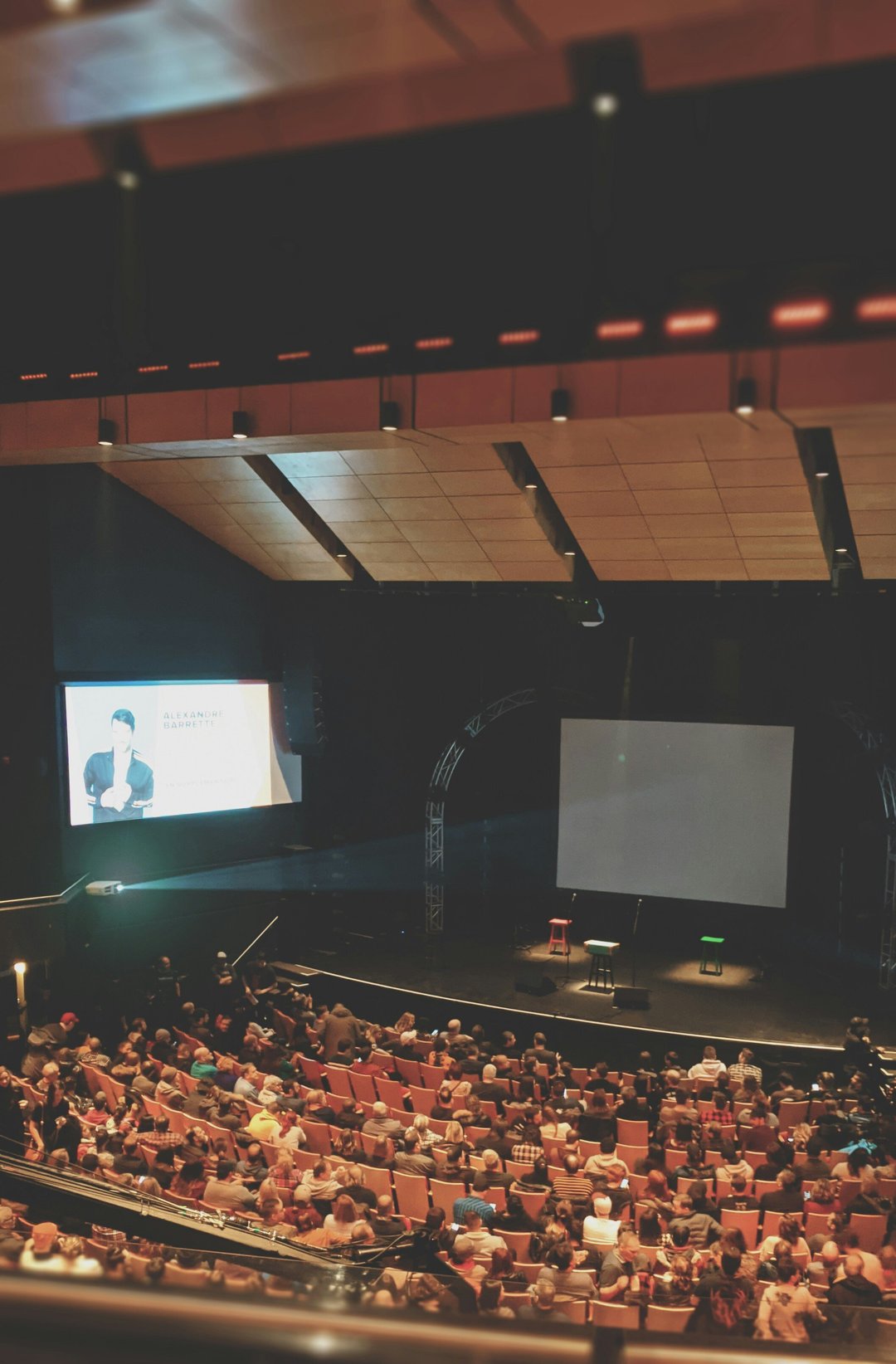
Image from a University lecture theatre. In-store education programs tap into a dominant cultural code of learning and self-improvement. Here the brand is not just selling stuff but helping consumers "self-actualise”.
Photo by Sigmund
Semiotic takeaway: Apple taps into deep cultural myths of learning and self-improvement and each culture codes this differently. In the context of the west, learning is based on the Judeo-Christian ideal of self-actualisation (being a person of the book). In Asian contexts on the other hand, education is linked to both religious codes as well as social status. Thus, offering education in store taps into codes of meritocracy, the self-made individual, authority. This positions the brand as an entity that not only helps the consumer self-actualise, but it also establishes the brand as an authority in the category.
This approach is relevant for any brand that wants to be a category leader by helping their consumers gain mastery over not only the product or service but the end individual or social uses of the same. By helping the consumer grow through the codes of learning, they are invested in the brand, increase loyalty as well as become brand ambassadors. It must be pointed out that this realm of brand experience is not exclusive. It should work alongside experiential elements such as environment and entertainment. A bespoke workshop space should be designed, and due consideration should be given to signs and symbols that are used to communicate education.
Escapism – The serene art gallery vs exhilaration
Escapism represents the desire to break routines through novel experiences. This involves conceiving of the retail space as an escape from the monotony of modern shopping. These have taken the shape of concept stores or retail spaces. Examples of this include the pioneering 10 Corso Como (Milan), Barber & Parlour (London), Colette (Paris), Fivestory (New York) and The Park-ing Ginza (Tokyo). American outdoor retailer REI’s flagship Seattle store features the Pinnacle; a 65-foot climbing wall which is used for classes, as well as open where customers can just turn up and use the facility.

10 Corso Como, Milan offers a "micro-world full of art, eating and products... that opens the mind through every sense”.
Photo by Jxlex
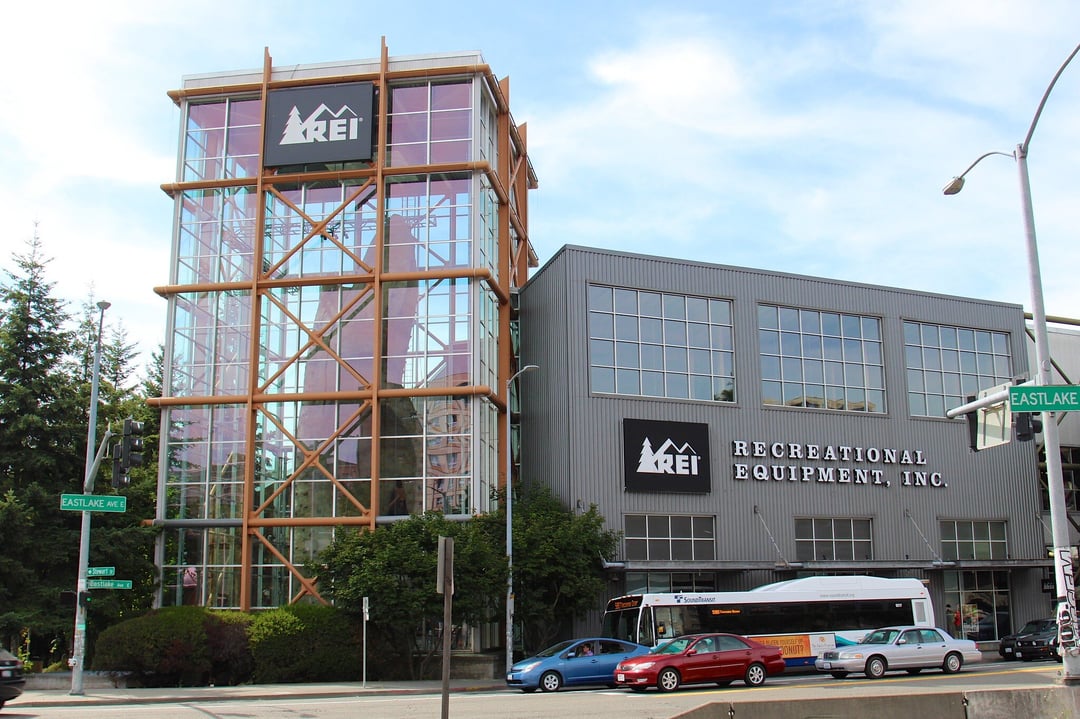
REI's 65-foot Pinnacle climbing wall in its flagship Seattle store.
Semiotic takeaway: While 10 Corso Como taps into the code of the oasis, haven, retreat – which serves to reinvigorate and inspire through beauty. REI’s Pinnacle climbing wall literally brings the exhilaration of outdoor adventure indoors. This codes the brand as being committed to the category and living and breathing it. Therefore, it is considered trustworthy. This approach allows consumers to live and experience the product values and therefore they leave the retail space with more than just stuff. They feel moved and leave invigorated, inspired, and aspiring for a better life. Ikea is a good example of this.

An Ikea display for a bed will include the end goal - a visualisation of the possibilities to lead a better life.
The escapism approach is relevant for brands that offer the opportunity to tap into the human desire for novel experiences. Some examples include a) offering escapism via immersive environments that can be based on the product, e.g., a 4DX motorbike simulator. This can be placed in malls/shopping centres, in the retail store; b) wellness and relaxation with the product. This is not limited to the health and wellness category. Where applicable, technology brands can set up wellness and relaxation zones in store; c) outdoor and adventure; d) opulence and luxury.
Entertainment – surprise and intrigue
Activities that entertain retail visitors can increase interest in and desire for products/brands. These include live product demonstrations, pop-up stores, fashion shows, and even includes live streaming. Entertainment can overlap with education. However, the key difference may be the attention span required. While education and escapism require brand and consumer investment in terms of time, entertainment as a part of experiential retail must cater to shorter attention spans and this creates challenges. How do we entertain consumers in a way that delivers on either sale or raising brand salience.
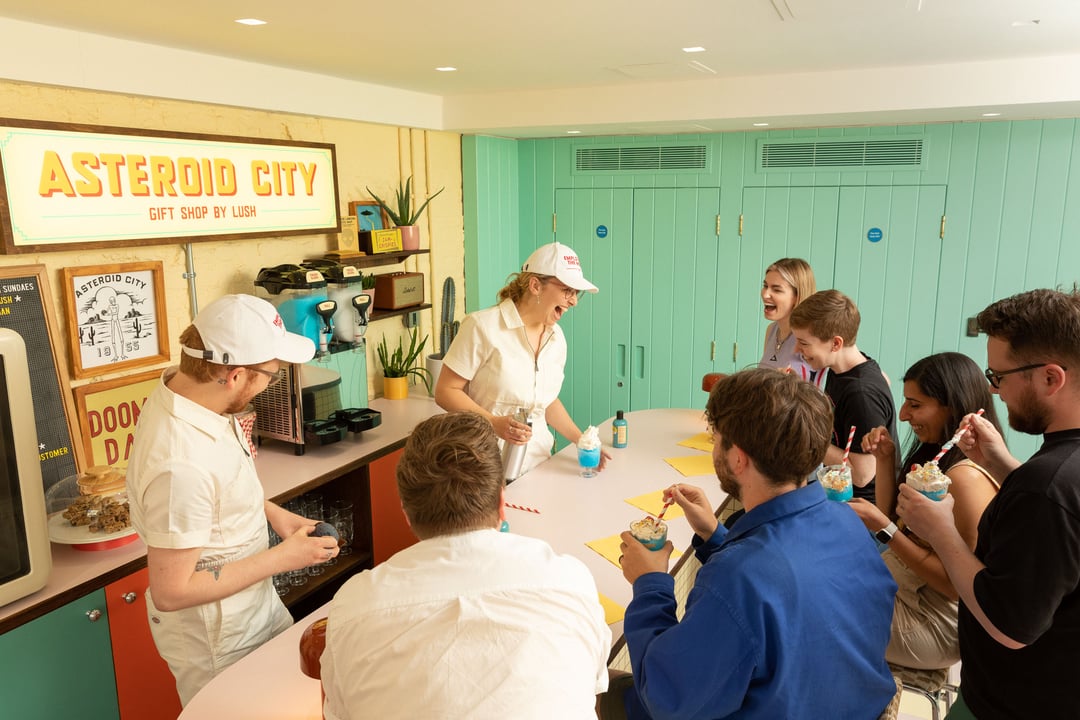
Lush pop-up store themed on Asteroid City. Such experiences entertain and refresh the brand in the mind of the consumer. However, does this enhance the Lush brand experience?
Source: Lush PR Image Library
Semiotic Takeaway: Entertainment should not be for its own sake. It should be grounded in the essence of the brand, product, or service. A good approach is to ask, what is the brand archetype and what kind of story, narrative, characters, and aesthetics would entertain to leave a lasting impression on the consumer? Red Bull not only sells energy drinks, but it also entertains its consumers through demonstrations of “extreme” events such as air race, mountain biking, cliff diving, car racing, surfing.

Red Bull entertains not only its core consumers but also the wider world through a range of "extreme" events.
Photo by Daniel Eledut
Recommendations and key takeouts
Experiential retail goes beyond transactions. Traditional retail had only one goal – sell stuff! Within the realm of experiential retailing, when brands focus on environmental experiences, primary driver may still be selling stuff . However, what sets experiential retail apart is the focus on using environment, education, entertainment, and escapism to positively impact the visitor emotionally in a memorable and meaningful way. This requires both brands and retailers to fundamentally rethink both the retail space and how brands utilise it.
Uncover unique cultural opportunities.
Start with the brand positioning and values and conduct semiotic research into recessive and emergent codes in the category and how the codes can be bent and broken to create new shopping experiences. Brands must understand and articulate their archetype and what it means at both cultural and consumer level. Is Ikea a furniture, appliance and home accessories brand or should it be understood from its semiotic archetype of Chicgalitarianism (Chic + Egalitarian). A brand that ways to own happiness can tap into cultural codes of contentment, gratitude, connectedness, success, peace, adventure, discovery, helping, giving, hope. Each of these codes are culturally specific and can be expressed via experiences whether environment, education, escapism, or entertainment.
Environment
How can design elements function as signs and symbols that evoke a myth or cultural code (e.g., the Church of Apple)? Is the environment supported by a service element? What role do signs, symbols, and narratives play in conveying meaning through the service element? Ikea represents chic through new product lines across all its product categories, designed to a high and uniform aesthetic standard. Egalitarianism is conveyed through self-service and assembly.
Education
Product or brand education should align with cultural codes of learning relevant to the category and analogous categories. Semiotic analysis can assist a brand in harnessing the most effective learning archetypes. For example, cultural ideas of learning encompass qualities such as intelligence, excellence, discipline, industriousness, individualism, creativity, innovation, versatility, brilliance, and ingenuity. The most relevant of the cultural codes of learning should be identified and applied across various product categories.
Developing a learning program based on the chosen archetype or archetypes for various products and services can also aid in clear communication. Adobe incorporates the archetypes of creativity, innovation, and versatility, while Apple's educational events tap into human archetypes associated with industriousness, productivity, and creativity.
Escapism and Entertainment
Humans have an innate desire to find meaning in their lives, and retail spaces and brands can contribute to fulfilling this need through entertainment and escapism. When brands enable individuals to escape or be entertained through retail experiences, they assist consumers in forming profound connections with the brand. There are various codes of escape and entertainment, including hedonism, nostalgia, heroism, romance, among many others. Each of these codes is an expression of human desires for aesthetics and beauty (hedonism), heritage and a sense of belonging (nostalgia), energy and strength (heroism), and passion and desire (romance). This is merely the beginning of how brands can harness these experiences. Once a brand has identified its archetype, it can design a retail experience that incorporates elements of escape and entertainment, tapping into and delivering on the underlying meaning of the execution.

Adidas Base Berlin is a 1500sqm space that offers anyone, whether individual or a team, the opportunity to be trained by expert coaches.
Bringing it all together.
Semiotics can be used to ensure consistency in the execution of the brand archetype and values, aligning them with the relevant cultural and category codes. This ensures that retail experiences are clearly differentiated and resonate with consumers.
A typical program will consist of analysing both resilient and emergent codes in culture relevant to the brand archetype. Furthermore, the study should audit competitor’s brand archetypes and the codes they use to express their brand archetypes, aiding in brand differentiation. The cultural analysis not only identifies the codes, but also signs and symbols that most effectively convey the signs and symbols. This includes design elements such as form, function, colours, materials, and finishes; language and communication; story-telling and narrative expression. The findings are presented as a report, which not only includes insights and recommendations in clear language, but also clear retail concepts which should include a comprehensive semiotics-inspired design and communication toolkit.
This approach enables the execution of the retail experience with distinct signs and symbols that can be utilised in store design (environment) or to communicate other affective elements such as learning, escapism and entertainment. This ensures that the meanings that consumers take away – whether consciously or subconsciously – is relevant and meaningful to the consumer and their lived experience. As a consequence, they will intuitively grasp the message.
Learn more about semiotics.
To understand more about how semiotics can be used to support marketing strategy read our article 'semiotics in market research and marketing' , where you can learn how semiotic insights can be utilised for strategic and tactical marketing activities
Get in touch.
Kishore is a trained semiotician with over 20 years of experience in cultural research across a range of categories including retail, FMCG, technology, pharmaceuticals and healthcare, automobiles, consumer electronics and government services.
Bryter are experts in retail research across a range of product categories. Get in touch to find out how we use semiotics plus a range of other approaches to support clients with their retail strategy and execution.
Web: www.bryer-global.com
Email: kishore.budha@bryter-global.com
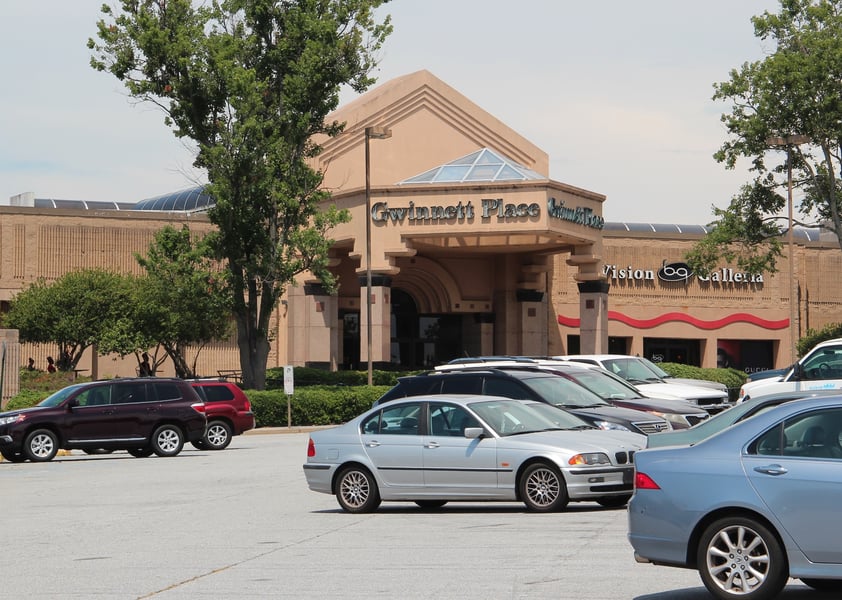





-bucknall-2449533.jpg)